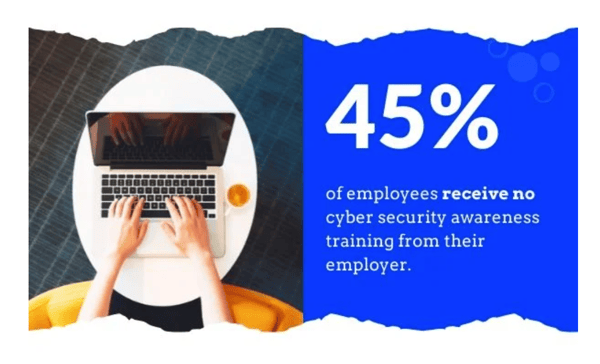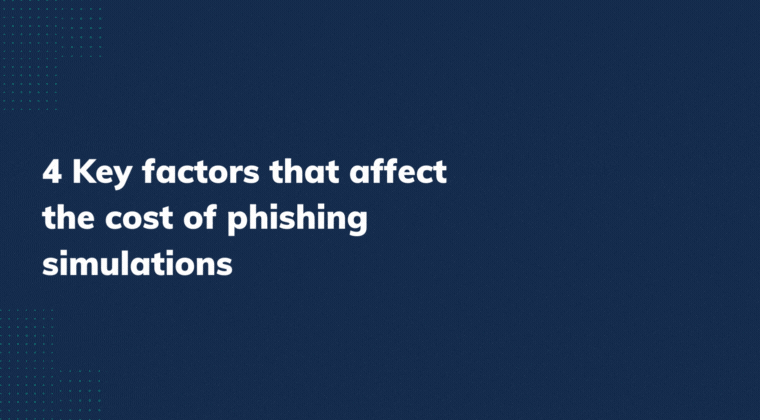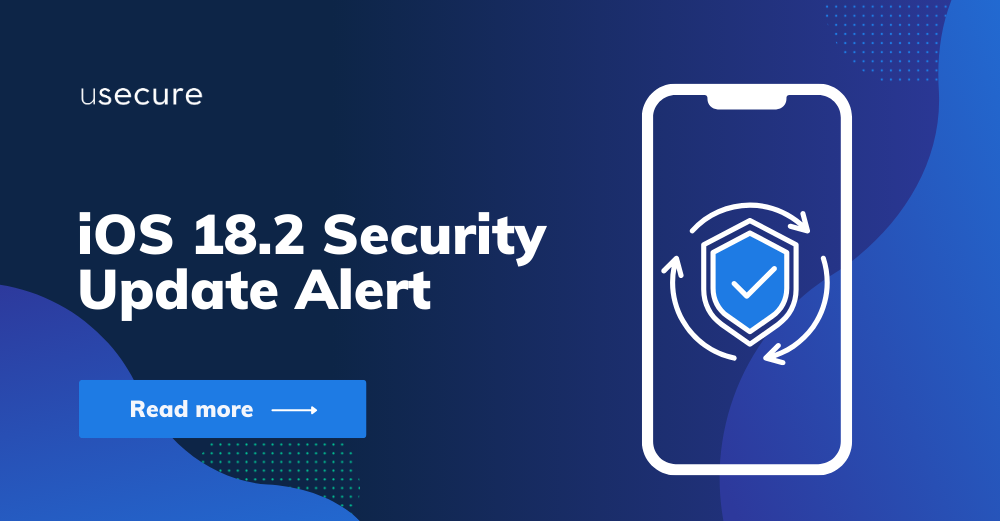Choosing A Cyber-Security Awareness Program: A Guide For Businesses
Implementing an effective security awareness program may at first seem intimidating, there is a lot of information out there and often a lack of clarity. However, it is a necessary and simple step for most businesses. Here, we outline the steps you can take today to implement your program and raise cyber-security awareness in your business.
Click the link to go to each topic:
1. Why Implement A Security Awareness Program?
2. Assessing Your Companies Cyber-Security Awareness Need
3. Preparation As Prevention Of Cyber-Attacks
4. Essentials To Include In Your training Program
4. Implementing Your Security Awareness Program
5. Educating And Supporting Your Staff
6. Embedding Cyber-Security Awareness in the Company Culture
7. Regularly Measure Your Security Awareness Training Results
8. Make Sure to Surround Your Training Program With Good Infrastructure
9. Making Sure Your Security Awareness Training is Compliant
10. Assessing Your Physical Security Risks
11. Using The Guide To Implement Your Security Awareness Training Program
Why Implement a Security Awareness Program?
If you're here, you probably are already thinking about or starting to set up your own security awareness program. However, it's good to keep the end goal in mind while implementing every step.
You want to ensure that your end-users are protected, and are practising safe habits when using technology in order to maintain your end-point security. The problem is that many employee's are not aware of potential threats, or sometimes just too busy to care.
This is why you want to make it as easy and pain-free as possible for these users to educate themselves on potential threats, and this is where an effective security awareness training platform can help.
The following steps will help you select, implement and manage a security awareness platform within your business.

Step 1: Assessing Your Companies Cyber-Security Awareness Need
This step involves assessing the size of your organisation, the industry sector and current cyber-security practices. If you are an SME in the digital sector for example, you may be at more risk of cyber-threats and should be implementing a high quality program.
However, don't be fooled, any company could be susceptible to a cyber attack, and it's often those that don't expect it that are the biggest target.
Ensuring that everyone in your organisation is trained to at least basic level is key. There is a lot of potential threats in cyber-security, so it's important to focus on getting the key, relevant information. It's just as easy to start 'over-training' as having under-trained employees.
Assessing your risk of a cyber attack, for example through a simulated phishing attack, can be a great way to gauge where your company is in terms of its cyber security. By simulating an attack, you will see the risk of this attack vector in a simulated environment, which may encourage you to think more about training!

Step 2: Preparation as Prevention of Cyber-Attacks
Perhaps the most important step in any security awareness program is to be prepared ahead of time for any attack. Rather than acting retrospectively, a good security awareness program will ensure that employee's are aware of any threats before anything arrives.
Just because your company has not been targeted, you think you are 'too small' or otherwise to be the victim of an attack, it's not acceptable to wait for something to happen first. You should not be waiting for an incident before giving staff the best level of education possible, and if this does happen learn from the mistake and regularly train employees.

Step 3: Essentials To Include In Your Training Program
When choosing a training program, it is important to consider the essentials that you will need in your business. Choosing succinct training courses, which reflect the ability levels of your users, is the fastest way to get everyone up to speed with the main threats presented in the cyber security environment. Focus on the key areas, and avoid technical jargon.
Beyond the educational essentials, there should be a focus on usability, and enjoyability for the user. This will ensure that they maintain a consistent focus to their training, and makes the training a memorable experience, which will in turn positively benefit the learning outcomes.
Some of the essential features to look out for include:
- Engaging Content (Videos, infographics etc.)
- Measurable results (Quizzes, risk assessments)
- Small, succinct modules
- Phishing Simulation capabilities

Step 4: Implementing Your Cyber-Security Awareness Program
Implementing your security awareness program relies on everyone in the organisation understanding the importance of the training and why it's necessary, from the top down. Creating a culture of security awareness, by embedding good practice within the organisation, will help with implementation.
Look for a platform which is simple to use, and you will be up and running in no time. Simply register your users onto the platform, and they will be automatically sent bite-sized training courses via. email on a regular basis. This will make it much easier to implement, and monitor the progress of your cyber-security training program.

Step 5: Supporting All Of Your Staff
The next step is educate, educate, educate. The more employee's know the more they will be able to help prevent any form of scam or hack from occurring. How you choose to educate your employees may be a long or short process.
Studies* have shown that the most effective way to educate about the risks are through short and regular training exercises. For example, overwhelming someone with all their training on the first day may be quickly forgotten, and the threat of an attack will not stay top of mind.
Step 6: Embedding Cyber-Security Awareness In The Company Culture
As mentioned previously, cyber-security should become part of the culture of the organisation. This can be done through policies, regular training, phishing simulations.
Some ideas to make people engage with their training more are:
1. Have a leaderboard of those who have made the most progress.
2. Make sure management is on board and committed to the program.
3. Have a culture of reporting anything suspicious to the IT department, and make sure everyone in the organisation knows the protocol.
By doing this, you are cementing a culture of 'awareness' which will help users understand their training and put more focus into their development.
Step 7: Regularly Measure Your Results
The next step is to check up on your program regularly, by checking in with the end users, or launching simulating phishing attacks you can assess the development of cyber-security awareness in your company.
Making sure new employee's are onboarded fast, that old employees are up-to-date is key to implementing an effective strategy. You may think about how you can automate this process.
Step 8: Make Sure to Surround Your Training Program With Good Infrastructure
However, even the best security awareness program will not work in isolation. Additionally, regularly run malware checks and ensure basic standard of security protection is implemented alongside the training program.
Making sure that the last line of defence, your employee's, is the purpose of a good training program, but keeping them defended needs the proper

Step 9: Making Sure Your Security Awareness Training is Compliant
Complying with government or industry standards is another main factor when considering a Security Awareness training platform. This way, you will know that you are covered legally if anything were to go unfortunately wrong.
As well as teaching courses on compliance, there should be policies in place which cover what employee's are expected to know. This way is a breach occurs, it is not down to negligence of the company, but that of the individual.
Ensuring that your SAT training course teaches compliance helps protect data, and avoid fines.

Step 10: Assessing Your Physical Security Risks
The final tip is that cyber-security does not stop at the desktop or laptop. You may not think it, but your physical presence also plays a role in cyber-security. There are many physical, real-world factors that can lead to data-loss, hacking or scams. Below is a list of some examples:
1. Tailgating
2. Theft of documents
3. Unaccounted visitors
4. Stolen identification
5. Social engineering
To learn more about these various threats, read our blog on physical security risks.

Using The Guide To Implement Security Awareness Training
By implementing these steps you can start your journey to educating and empowering your employee's with cyber security knowledge. By following these steps you are ensuring that your users receive the highest quality training possible. By turning your users into an asset, rather than a cyber-security risk, in the long-term you will save yourself time, resources and a potential cyber-attack.
Want to learn more? Whilst your here why not download our 2020 Guide To Security Awareness Training


